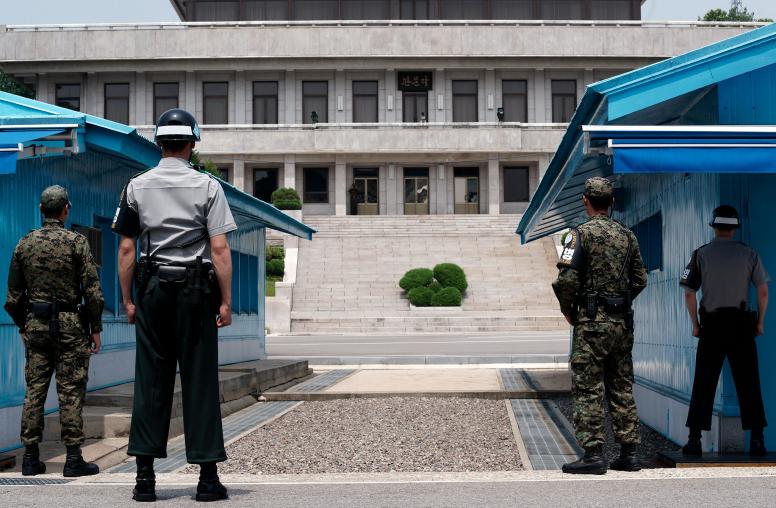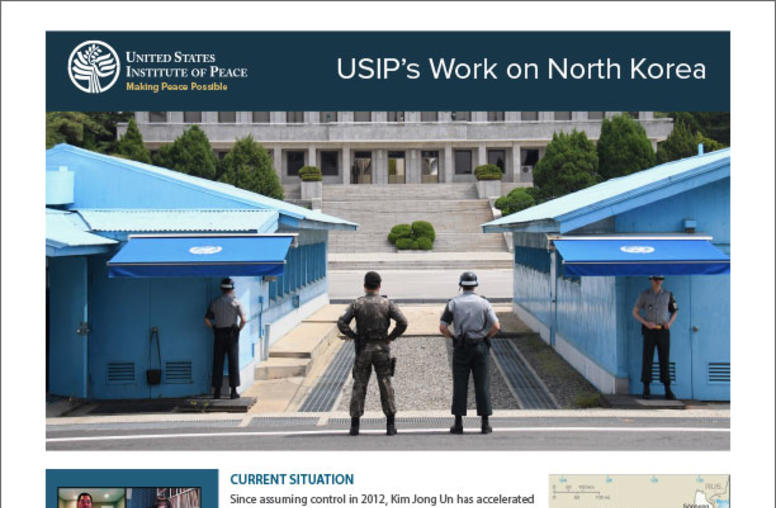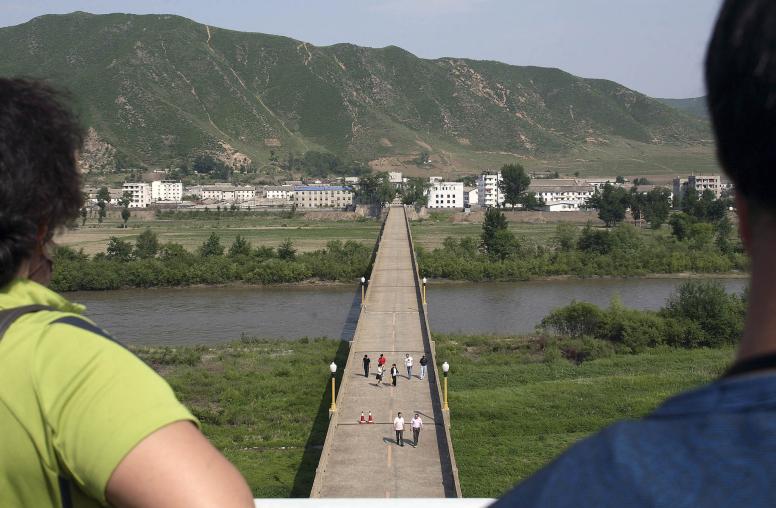North Korea Poses Old Challenges to New U.S. Administration
Just a week before President Biden was inaugurated, North Korea provided a reminder that it would continue to pose challenges to Washington—but left the door open for renewed engagement. During Pyongyang’s eighth Party Congress, North Korean leader Kim Jong Un was surprisingly candid about his country’s economic struggles. He also followed a familiar refrain, emphasizing the importance of strengthening North Korea’s military capabilities and calling Washington enemy number one. The Biden administration will come into office facing the same situation with North Korea that has bedeviled Washington for decades.

USIP’s Ambassador Joseph Yun and Frank Aum discuss what came out of the Party Congress, what we can expect from the incoming Biden administration, and how China will factor into the United States’ North Korea policy.
What did we learn out of the recent Party Congress in North Korea?
At the recently concluded eighth Party Congress in North Korea (Jan. 5-12), Kim Jong Un underscored the country’s economic difficulties, noting that the five-year economic plan failed, but also maintained the need to strengthen and modernize Pyongyang’s nuclear and conventional forces.
Kim continued his hardline stance against the United States, calling it the country’s “biggest enemy.” As a result, Kim said, North Korea will continue to strengthen military deterrence capabilities, including land- and sea-launched solid fuel ICBMs, tactical nuclear weapons, greater precision capabilities in missiles, multiple warhead launch vehicles, military surveillance satellites, nuclear submarines, and hypersonic aircraft. This drive to strengthen the country’s military capabilities, Kim added, was designed to gain leverage in dealing with Washington to “drive diplomacy in the right direction and guarantee its success.”
However, Kim did not rule out diplomacy. He praised the 2018 Singapore Agreement and seemed to reaffirm it. The North Korean leader also said he would respond to “force with force, and to good will with good will.” Kim’s central point on foreign and security policy was that he’s still waiting for some kind of signal from Washington as to the trajectory of its policy. The aggressive rhetoric and parading of military equipment are par for the course. In short, Kim indicated his willingness to engage as long as U.S. policy is not overtly hostile.
Another important and complicating factor for diplomacy is whether North Korea is willing to engage. For the last year, North Korea has retreated into its shell as it battles the COVID pandemic, sanctions, natural disasters, and an overall inhospitable diplomatic environment; the COVID situation will need to improve dramatically for Pyongyang to feel secure enough to engage again.
What can we expect from the Biden administration?
The Biden administration’s recent hires for the National Security Council and the State Department in the East Asia space—Kurt Campbell, Edgard Kagan, Laura Rosenberger, Ambassador Sung Kim, Jung Pak—worked the Korea portfolio during the Obama administration and therefore, provide experience and continuity from the more conventional approach to the Korean Peninsula. However, this team will face concerns about whether the band, having gotten back to together, will play old tunes or new songs. At the upper echelons of the administration, Biden has experienced hands in National Security Advisor Jake Sullivan and Secretary of State Antony Blinken, who are well-versed in North Korea policy from their time in the Obama administration.
Despite Secretary Blinken’s testimony that the Biden administration will review the entirety of North Korea policy, the Biden team has previously hinted at two major components. First, Blinken noted in a 2017 New York Times op-ed that he favors “comprehensive, sustained, and relentless international pressure” against North Korea to bring it back to the negotiating table. Biden also stated during his last debate with President Trump that he would turn up the heat on China through greater military activities in the region if Beijing did not get North Korea to control its behavior. Even during his confirmation hearing, Blinken added that the policy review would look at “what can be effective in increasing pressure on North Korea.”
Second, in a 2018 New York Times op-ed, Blinken indicated his preference for pursuing a policy reminiscent of the Iran nuclear deal, which would include an interim agreement that freezes nuclear and missile activities with monitoring in exchange for partial sanctions relief. This deal could then open the door for more comprehensive negotiations. To achieve this deal, the Biden administration will not follow the top-down approach employed by President Trump but instead start with lower-level engagements and clear commitments ahead of any flashy summits.
In addition to early personnel hires, other signals of the direction the Biden administration wants to take will be: how soon Biden meets with allies like South Korea and Japan and the outcomes of those meetings; whether Washington favors continuing the reduced level of the spring U.S.-South Korean joint military exercises, which usually takes place in March and April; and how the United States conducts a North Korea policy review.
North Korea’s approach has long been to respond to pressure with pressure. So, the fundamental question for the Biden administration is whether pressure will be effective—not just in imposing costs on North Korea but in actually changing its behavior.
Given rising tensions between Washington and Beijing, how will China factor into North Korea diplomacy?
As stated earlier, the Biden administration will likely seek to enlist China’s cooperation in pressuring North Korea to be a more responsible actor and engage in denuclearization talks. The problem is that Beijing has shown little interest in pressuring Pyongyang, at least in a sustained fashion. China prioritizes stability on its borders over North Korean denuclearization and prefers that Washington and Pyongyang engage bilaterally to improve relations and sort out any problems. China has also consistently promoted a dual freeze in U.S.-South Korea military exercises and North Korean nuclear and missile tests to reduce tensions as well as parallel track discussions of denuclearization and peace.
Another problem with trying to outsource the North Korea problem to China is that, of all the major concessions that North Korea is seeking, such as sanctions relief, reductions in military exercises, and an end to U.S. strategic and nuclear asset deployments near the Korean Peninsula, only the United States can provide them.
If Washington insists on a pressure-heavy approach with North Korea and China, it may face tough sledding over the next four years, including a continued diplomatic stalemate and a return to a heightened level of North Korean weapons tests.



